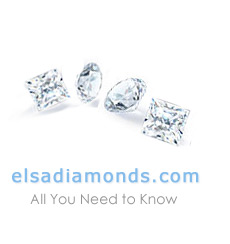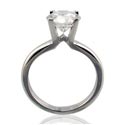
Guide for Buying Diamonds
Buying a Diamond - A Simple Guide
Even before you've started budgeting for your wedding, chances are your husband to be has probably already spent a lot of money on your ring.
No two diamonds are alike and the majority of brides all want diamonds. But even though you've heard the phrase "diamonds are a girl's best friend" that doesn't necessarily mean all brides are in love with their diamonds.
Hopefully, you will be shopping for a diamond only once, so its important that you do it right and know what to look for.
A diamond is unique
One of the biggest misconceptions people have about diamonds is that a diamond is a diamond. People tend to look at the design and settings and overall look of the ring instead of considering what they are really spending the money on - which is the stone itself. The most important thing you will want to remember about buying a diamond ring is that the stone is what is most important, not the setting.
In determining the value of a diamond there is what we call the four C's
Cut: the diamond's shape. Some popular shapes are round, square, oval, pear, heart and marquise.
Color: the less color in a diamond, the more valuable.
Clarity: the less inclusions within the diamond the more valuable.
Carat: the weight or size of the diamond.
A diamond is not just a financial investment; it is also an emotional investment and one of the big ones that couples make in their lives. So if you're going to buy a stone, you will want it to be one of the prettiest ones in the room.
Once you've picked out your stone, you might want to consider taking it to a certified gemologist for an appraisal. It's much easier to appraise the stone before it is put into a setting than after. When a stone is in a setting, the color grading becomes iffy because the metal will affect the appearance and color of the diamond. You also cannot always see all of the stone because the edges can be covered with metal.
Sometimes appraisals can vary and differ from one appraiser to another. An appraisal is subjective because color and clarity grading are not perfect sciences. Often, what you will get is the opinion of the appraiser, so it may not hurt to have more than one opinion. Even in the labs when the initial grading is done, the final grading is usually the average opinion between 2 or three gemologists.
In the end, just make sure that after you have had it appraised, and if you don't like the results that you can take it back for a full refund.
Is your diamond real?
What if you just want to know if your diamond is real or not? A sure way to tell is by holding up a newspaper to it. If you can read the newspaper, you don't have a real diamond. Gemologists will use what is called a diamond reader. They hold this small tool over your diamond and if it beeps, it's real.
In the early 1400's diamonds were used to represent enduring love because of their hardness. Today, giving a diamond before marriage is a tradition that has only been around for the last 100 years, but will always remain a symbol of enduring love.

